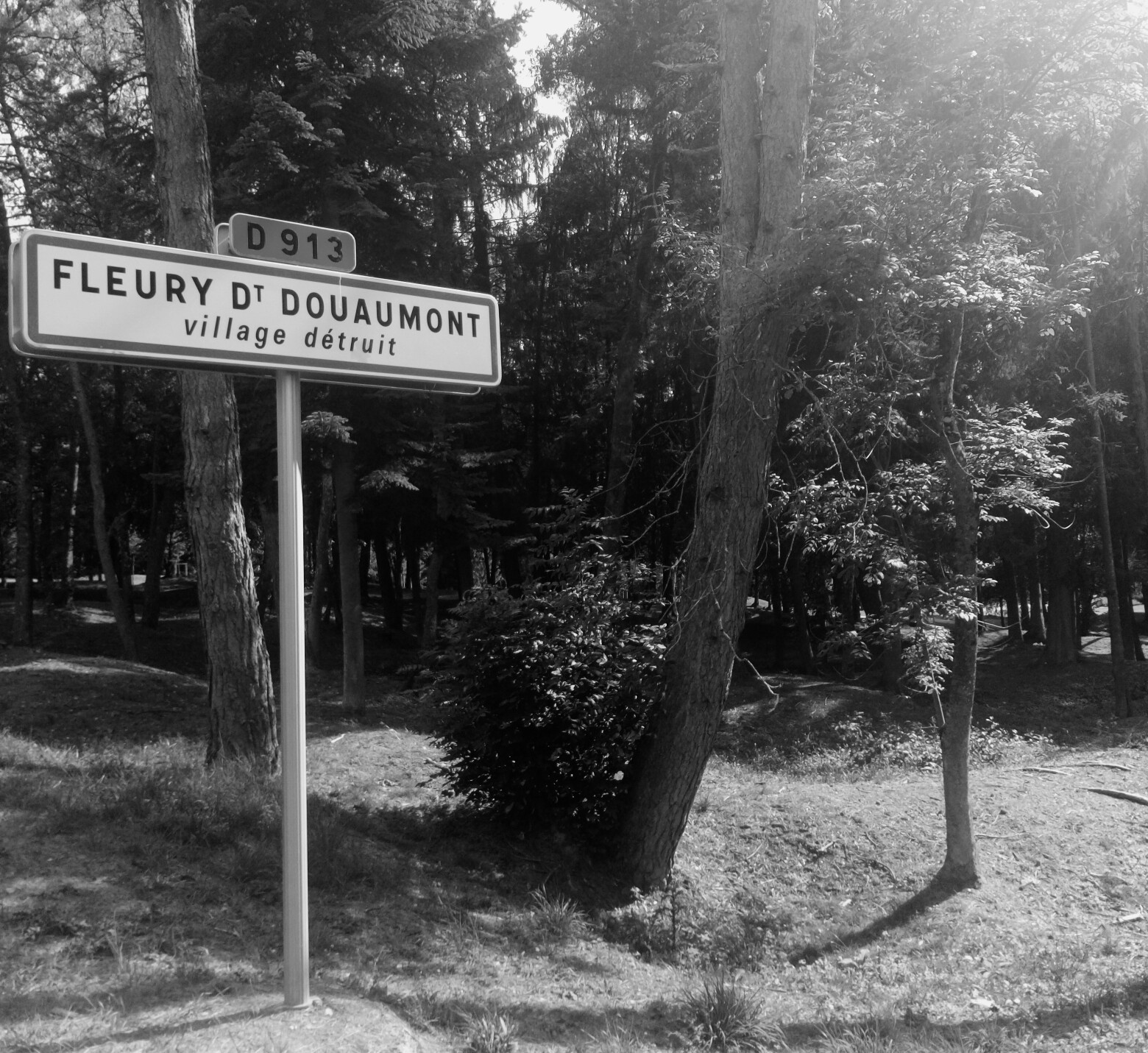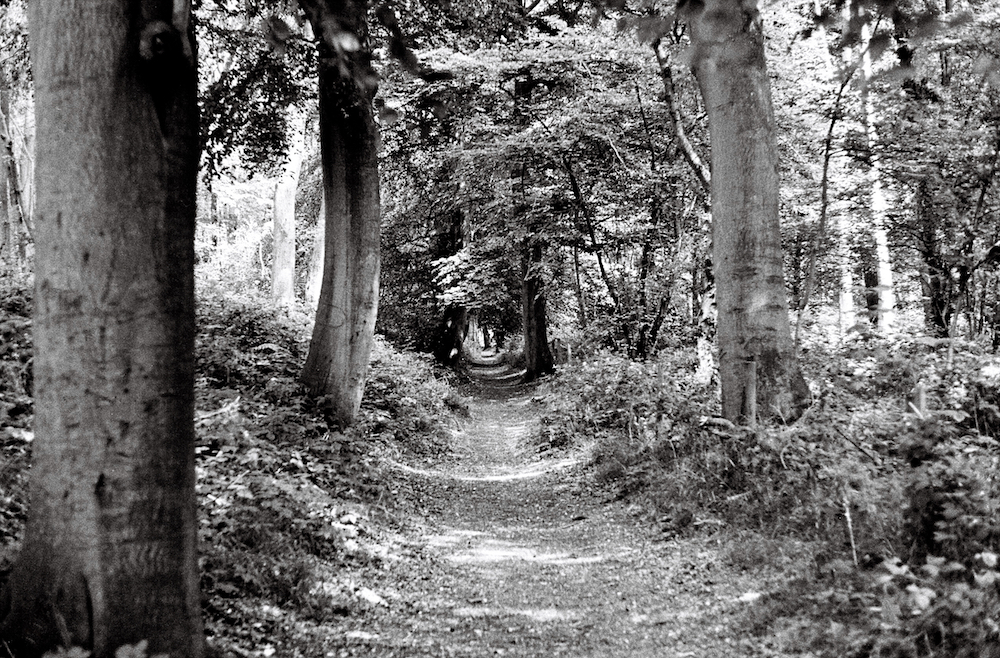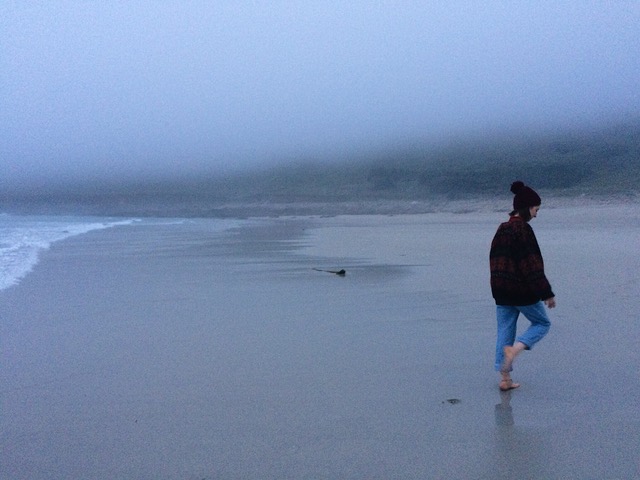By Aoife Inman:
It’s late but the evening light lingers at the peripheries of the ocean making the day stretch long into the night. Time seems to stretch here, the minutes distorted by the quiet swell of the ocean.
The air is full of mist; it pads out the twilight zone between the last dregs of evening and the soft beginnings of the morning. I’ve always thought this is an almost mythical piece of the day, when it’s neither light nor dark and the sky is damp and thick with salt, brushed in off the incoming tide. You can hold the mist between your teeth, wads of it pressed against the insides of your cheeks like cotton.
There aren’t many who bother to come down to the sea front at this hour, with the weather, as it is, temperamental and unforgiving. The wind bites and scratches at any scrap of skin left bare to the element and my thighs are lined with small red welts and scratches – the claws of the ocean have dug their way into me, right to the bone. Today, however, there are a few faces who peer palely over in my direction as I trail down the hill – van dwellers, keen surfers and fishermen, who are all, themselves, half brine and barely human, at least in the city sense of the word.
This was always the place I felt most at home, not here specifically but this ocean, this crack of coastline that juts out obstinately, defiant and secluded. It feels a million mile away from the industrial powerhouse cities I’ve made my home now.
Home. It’s a strange word whose weight has always felt uncomfortable in my mouth, hard and bitter. I was born on the road, moving between a collection of cardboard houses, each one like the last and yet lacking something. I resided in houses, habitats, a series of rooms, plaster, mortar and board – safe and comfortable but never permanent. To belong to just one place strikes me as an exhausting concept.
I thought when I had grown up that I’d settle somewhere; that I’d stop moving and plant some roots, or whatever the metaphor is, but I’ve realised that those moments, those years spent on the road, they get into your bones over time. Slowly, you barely feel it at first, but I can’t stay still now. I’ve tried, time and time again, found a place I love and settled there with a job and a plan and a circle of friends and then I feel that itch, again, against the soles of my feet. It’s like a disease, that itch, that want for change, it’s exhausting sometimes.
I walk along the cliff path, away from the cove, to the world’s edge where the grassy slope seems to fall away into the deafening blue. It’s a steep rocky path carved right into the grit and soil of the cliff, the sort that has been etched by many pairs of feet, worn over many years. When the tide eventually comes in it will cut off this path completely, a void of cold, blue Atlantic filling the space where my feet have trod. Nothing about the breadth or surface of this terrain is easily digestible. It’s a wholegrain, bran and fibre sort of landscape – some find it lonely, harsh, and unforgiving – I find myself falling in love with the rough corners of it every time I return.
When I was a child we were taught to spot currents on cliffs like this, our hands tracing the motions of the sea, trailing the lines of white foam that spread across the ocean like a film. I reach out my hand to lay it on the horizon, palm obscuring the bulb of the grey sun.
If you follow the cliff path round the curling edge of the peninsula you reach a town, a knot of tangled streets that overlap one another like old strings, every one gnarled with potholes and cobbles. I follow it now, zigzagging through kissing gates and through fields of thick grass. Everything is further apart here, houses and gardens stretch along the street, sand banks drag the beaches way out into the bay and the years seem to trickle by – I do not have to measure time so carefully here, there are months to spare.
The town is simple, a harbour filled with thin fishing boats and crab pots, a lifeboat house, a shop selling spades and 99 cones. It’s fixed in another time, another era where people worked with their hands, in the earth and the water.
This place is filled with mysticism, steeped in folklore, luck bound in rhymes and patterns of three. It’s everywhere you look, tucked in corners of woodland and thin waterfalls where faerie stacks topple. Down in the town the boats that jut out into the cove are named after mythical lands and magical creatures, suspicion has wormed its way amongst the men who tend the land and drag the sea.
“Look down there.” The mother leans into the clove of her son’s ear as she speaks. “Look down at that boat there, see the lions on its side?”
Sure enough, on its flanks are painted two yellow lions, their manes dipping and rising out of the green waters.
“They’re named after the legend of Lyonnesse…legend says there used to be a beautiful isle just set above Seven Stones reef that is halfway out to the Scillies. The city of lions and the land of Lyonesse, built with 140 churches atop it and a castle they say, all swallowed up in a single night by the ocean.”
The boy’s eyes widens as he listens, his hands gripping the handrails with his chubby palms.
His mother crouches down by his side, “look now do you see the top of the steeple there, just jutting out of the waves?”
He nods, eyes fixed on the grey sea.
The light is fading now, obscuring the edges of the day. Home, it’s a strange thing I think again, I wrap my tongue around it, a lump in the hollow of my mouth. It’s everywhere here and yet it feels distant. It’s in the lilt of the mother’s curling accent, the one I have lost over so many years spent away. It’s in each vowel, full bodied and warm, the crackle of pebbles under rubber boots in the evening tide, the low thud of water turning cliff to rubble.
I collect them in my palms as I count them, feel the weight of the love I hold for this place, and close my eyes as the day melts.
About the author:
Aoife Inman is a writer and historian based between Cornwall and Manchester. Her short stories have been published in Electric Reads’ Young Writers Anthology 2017 and New Binary Press’ 2018 Autonomy collection, as well as being long-listed for the 2016 Royal Academy Short Story Award.

















